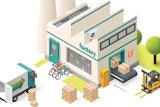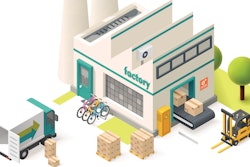“Customization” is the dirtiest word in the Enterprise Resource Planning (ERP) language. On the surface, customization can seem like a great concept: Should a manufacturer require a unique capability, custom changes to the code can be made to fulfill their needs. Given any issue, customization is indeed the fastest way to solve a problem the first time. It is also, however, the worst way to solve a problem long term.
The often misunderstood complexities of this approach can result in an unacceptably high level of risk to all those that are involved in running and growing a business. As changes are made to the base ERP technology or to the business, the true costs of customization become apparent: scope creep, “Growthus Interruptus”, and reduced ability to upgrade the system.
Scope Creep
Quite often in ERP systems, what initially seemed like a small change can turn into a major undertaking. As the programmers dive into the project, they start to truly understand the details behind what is required to properly and fully implement a change.
ALSO READ: Understanding the Challenges of Business Intelligence
As the old spiritual song observes, “hip bone connected to the back bone.” The beauty of properly implemented ERP software is that everything is seamlessly connected and all parts of the business function in unison. If a company decides to customize a solution, for example tracking lots from purchasing to production and through to the customer, it becomes complicated. They may soon find themselves customizing the purchase order process, the process of issuing material to work orders, the QC process and the warehouse management (WMS) process to identify which lots went to certain customers. Additionally, these changes may impact sales reporting, inventory value at the general ledger, and how a physical inventory process is handled.
In short, there are lots of verses connecting “Dem Bones” and while we knew the hipbone and backbone are connected, the backbone is also connected to the shoulder bone. What seems to be a small change has an effect throughout the entire system even when it is not always obvious at the beginning of the project.
Growthus Interruptus
Customized ERP software can cause a rude awakening to a growing business by slowing the company’s ability to adjust to change and therefore grow. In other words, these businesses experience “Growthus Interruptus.” Growth opportunities often require business operations to run differently than what was done in the past. All too often, the customizations that were done to handle the old strategies are not able to evolve rapidly to handle today’s new opportunities.
Generally speaking it is more difficult for a customized solution to evolve over time than it is for a solution that was installed “out of the box.” This creates the unfortunate situation where the ERP software that was purchased to facilitate growth actually interrupts the ability of the business to grow into the future.
Upgrade Inabilities
If you customize the engine of a shiny, new BMW, chances are that you are no longer going to be able to get service from the BMW dealership. The same is true if you customize your ERP software. Once customized, ERP software is somewhere between challenging and impossible to upgrade.
In order to offer your business a truly long-term solution as your business evolves and grows, your ERP software needs to constantly evolve with you. Changes to the regulatory environment, business practices and base computer functions are inevitable over time. Consider the dramatic changes that have incurred over the years surrounding international shipments, the Internet and regulations for food, pharmaceutical and chemical reporting - it becomes clear that your ERP system needs to be able to evolve rapidly to be a competitive weapon.
So before you embark on a project to start or continue customizing your ERP software, consider how this project may impact your company’s ability to compete now and into the future. Chances are the long-term costs of customization may be way higher than you expect.
Jay Deakins is the Founder and CEO of Deacom, Inc.























